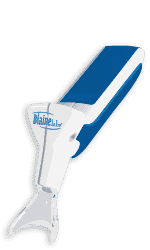Physical issues can affect your self-esteem and overall satisfaction with life. Patients frequently complain that their aging faces, or their saggy breasts and tummy, instill negative feelings on a daily basis. Having plastic surgery can give you the freedom to focus on the enjoyable aspects of life. Not only can having plastic surgery improve your confidence and self-esteem; it typically leads to positive changes in diet and exercise habits, leading to a healthier and better you.
Choosing to undergo any type of plastic surgery can be a difficult decision to make and the internal dialogue of someone considering plastic surgery can seem more like a battle!
“Am I just being vain? Maybe I’m being selfish. Will my results attract positive or negative attention? I’ve worked so hard to reach my weight loss and health goals, now I want to look my best! Should I go ahead and do it, or wait? What will my family, friends and co-workers think?”
Plastic surgery is a very personal decision and the results can be life altering. If you’ve ever thought having a nose job or a facelift will help you feel more confident when interacting with others, or that a mommy makeover after having children will help you feel more like you again, or that liposuction may finally help you achieve the physical results you’ve worked so hard to attain with exercise and eating right, then having plastic surgery can be a physically and emotionally beneficial option for you.
Researchers at Ruhr University Bochum in Germany studied the psychological effects of plastic surgery on 544 patients; their results are reported in the journal “Clinical Psychological Science“. . They compared 544 first-time surgical patients with two other groups: one group was 264 people who had previously wanted plastic surgery and then decided against it, and the other group was assembled of 1000 people from the general population who have never been interested in having plastic surgery procedures. No significant differences existed among the three groups in regards to issues such as mental health and overall satisfaction with life.
The psychologists examined the patients before surgery, as well as three, six and twelve months after having surgery. On the whole, the surgical claimed to have achieved their desired goal, and were satisfied with the long-term results. Compared to those who had chosen not to have plastic surgery, the patients who had plastic surgery demonstrated more enjoyment out of life and reported feeling healthier. They were less anxious, had developed more self-esteem and found themselves more attractive.
Having plastic surgery is a serious commitment that should be approached with realistic expectations. Like all surgery, there are risks associated with having plastic surgery. Be sure to see an experienced board certified plastic surgeon if you are interested in learning more about which plastic surgery procedures may be beneficial for you.



